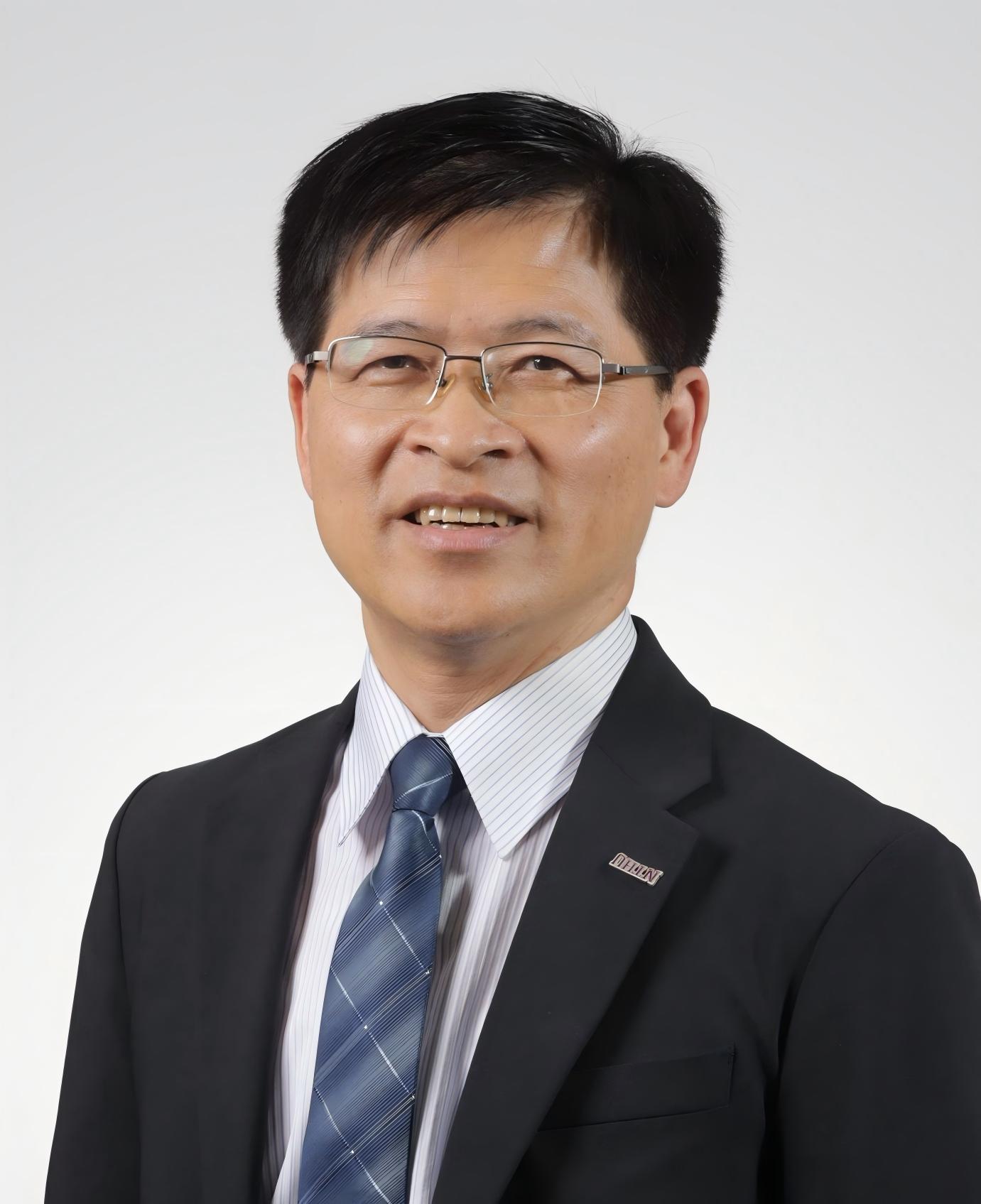Invited Speakers

Prof.Chuan-Chung Hsieh
National Tsing Hua University, Taiwan
Professor Chuan-Chung Hsieh is the Chair of the Department of Education and Learning Technology and Director of the Teacher Education Center at National Tsing Hua University, Taiwan. A distinguished leader in education, he integrates visionary leadership with grounded practice, drawing on his experience as a former principal and scholar. His research and leadership focus on educational innovation, technology leadership, positive education, and teacher professional growth. Professor Hsieh has published extensively, with 25 papers in SSCI and 22 in TSSCI journals, contributing significantly to educational reform, TALIS data research, and school innovation. Recognized for his outstanding achievements, he has received the prestigious Mó-Duó Award—Taiwan’s highest educational honor—along with the Distinguished and Outstanding Research Awards from National Tsing Hua University.
Title: Leading the Future of Education with AI: From Vision and Practice to Ethical Innovation
Abstract: The rapid integration of artificial intelligence (AI) into education has created new demands for school leadership, requiring principals to demonstrate not only technological fluency but also ethical governance, strategic foresight, and instructional innovation. This study aimed to develop and validate a competency-based AI Technology Leadership Scale (AITLS) for assessing elementary school principals’ readiness to lead AI-driven transformation in Taiwan. Grounded in Social Cognitive Theory and informed by contemporary leadership perspectives—including transformational, visionary, adaptive, AI, and technology leadership—the research adopted a sequential exploratory mixed-methods design consisting of three phases: item development, scale construction, and validation. Through literature synthesis and expert consultation, an initial pool of behaviorally anchored items was generated. Exploratory Factor Analysis (EFA) with 162 principals revealed eight preliminary leadership dimensions. Subsequent Confirmatory Factor Analysis (CFA) with 416 principals validated a five-factor model comprising AI Vision Development, Leading AI Adaptation, AI Problem-Solving, AI Instruction Design, and AI Ethics Leadership.

Prof. Edwin P. Christmann
Liberty University, USA
Edwin P. Christmann earned his Ph.D. from Old Dominion University and an Advanced Diploma in Research in the Sciences from the University of Cambridge (UK). He is a full-professor in the Helms School of Government at Liberty University, where he serves as the Director of Research Methods and as a Research Methodologist. In addition, he has served as a contributing editor for Science Scope, the journal of the National Science Teaching Association (NSTA), and as a member of the editorial review board for 19 peer-reviewed journals. Dr. Christmann has published more than 100 articles and has authored or coauthored several books on education and statistics.
Title: Evaluating the Effects of Computer-Assisted Instruction on Math Performance
Abstract: This meta-analysis examined the research question "What differences exist among the academic achievement levels of mathematics students who were exposed to computer-assisted instruction, and those who were not exposed to this instruction?" Hence, a comparison of the mathematics achievement between students who received either traditional instruction or traditional instruction supplemented with computer-assisted instruction (CAI) was conducted. From the twenty-seven conclusions, an overall mean effect size of 0.236 was calculated, indicating that, on average, students receiving traditional instruction supplemented with CAI attained higher academic achievement than did 59.48 percent of those receiving traditional instruction alone. Moreover, a .094 correlation between effect size years indicates that the effect of CAI on mathematics achievement has slightly increased during this period.

Assoc. Prof. Imasaki Tsunehide
Bunkyo Gakuin University, Japan
Dr. Tsunehide Imasaki graduated from Kyushu University in 1992 and spent over 30 years as a reporter and manager at NHK, Japan’s public broadcasting corporation. He played a central role in NHK WORLD’s international news programs and served as Chief of the Internet News Team, leading digital transformation initiatives in broadcast journalism. He earned an MBA from McGill University in 2004, completed the Stanford Executive Program (SEP) at Stanford Graduate School of Business in 2016, and received his Doctor of Business Administration (DBA) from Hitotsubashi University’s Graduate School of International Corporate Strategy (ICS) in 2021. Since 2023, Dr. Imasaki has served as Associate Professor at Bunkyo Gakuin University in Tokyo and Saitama, where he teaches business management within the Department of Social Welfare. His research examines organizational management in small teams, focusing on Kyocera’s Amoeba Management System and its adaptation in the social welfare sector.
Title: Digital Transformation in Japan’s Elder Care: Leveraging Big Data and AI Through the LIFE Platform
Abstract: Japan is facing a major demographic shift, marked by rapid population aging and severe labor shortages in elder care. In response, the government launched the LIFE (Long-term Care Information system For Evidence) platform—a nationwide big data infrastructure that collects standardized, anonymized data from care providers. LIFE enables a data-driven approach to improving care quality by capturing physical, cognitive, and care-related metrics. Ongoing joint research explores its integration with AI technologies such as predictive analytics and conversational agents. However, limited digital capacity and funding hinder broader adoption. LIFE offers key insights for building scalable, AI-enabled care systems in aging societies.

Assoc.Prof. Mikie Nishiyama
Tokyo Healthcare University, Japan
Mikie Nishiyama is an associate professor in the Postgraduate School of Tokyo Healthcare University and a Ph.D. candidate at the University of Tokyo. She holds an M.A. in Linguistics from the University of London, an M.A. from Kyoto University, and an M.A. from the University of Tokyo. She teaches graduate-level English for academic purposes and undergraduate English courses. Her research focuses on AI translation and generative AI tools in foreign language writing and assessment.
Title: Aligning ChatGPT with Human Judgment in EFL Writing Assessment
Abstract: This study evaluates how closely ChatGPT aligns with human judgments in EFL writing assessment using a classroom-specific rubric. Japanese EFL learners produced essays after integrating AI translation into coursework. Essays were scored by both instructor and ChatGPT—agreement was substantial on formal dimensions (grammar/syntax, organization) but weaker on task appropriateness. Results support a model where AI handles rule-based scoring and humans provide context-sensitive evaluation.

Senior Lecturer Mariam Mohamad
Universiti Sains Malaysia, Malaysia
Dr. Mariam Mohamad, Senior Lecturer at Universiti Sains Malaysia, is a pioneering researcher in mobile learning and assistive technology. Her work is internationally recognized, cited by UNESCO, and featured in prominent publications. She has been invited to speak at numerous global conferences, including events by UNESCO and in countries like Japan, Singapore, and the Philippines. Awarded international research grants and multiple innovation medals, her projects support dyslexic and visually impaired learners. Dr. Mariam is also active in community service, serving as President of the Dyslexia Association (Penang) and advisor to student and disability organizations, advocating for inclusive education.
Title: A Bibliometric Review of Mobile Assistive Technology Research for Dyslexic Children: Mapping the Landscape of a Decade
Abstract: Dyslexia, a prevalent neurodevelopmental disorder affecting reading and writing skills, poses significant challenges to educational attainment. In recent years, mobile assistive technologies have emerged as promising tools to support dyslexic children in their journey. Despite the increasing focus on mobile assistive technology for dyslexic children, a comprehensive overview of the research landscape is lacking. The field is characterized by a proliferation of studies, diverse methodologies, and an expanding knowledge base. This bibliometric review leverages advanced analytical tools, with a primary focus on the VOS viewer software, to conduct a comprehensive analysis of the literature spanning from 2014 to 2024. A carefully curated dataset, comprising research articles sourced from reputable databases, forms the basis of the analysis. Anticipated outcomes include visually rich maps depicting the citation networks and keyword co-occurrence patterns within the realm of mobile assistive technology for dyslexic children. We expect to identify key articles shaping the field, prominent clusters of research, and evolving trends. This bibliometric review aspires to contribute a panoramic view of the last decade's research landscape in mobile assistive technology for dyslexic children. The anticipated insights hold the potential to guide future research directions, technological innovations, and educational interventions, ultimately enhancing the support available to dyslexic children through mobile assistive technologies.
Keywords: mobile assistive technology, dyslexic children, dyselxia, bibliometric review

Assoc.Prof. Siti Hajar Halili
Universiti Malaya, Malaysia
Ts. Dr. Siti Hajar Halili is an Associate Professor at Universiti Malaya and Head of the Curriculum & Instructional Technology Department. A professional technologist (Ts) under MBOT, she was formerly with the Research Division of the Prime Minister’s Department in Malaysia. She holds a Ph.D. in Adult Education Technology, a Master’s in Educational Technology (USM) and a Degree in Information System Technology Management (UiTM). Her expertise focuses on Digital Education, particularly in Flipped Learning, Open Distance Learning, Digital Badges Learning, Instructional Design & Technology and Digital Curriculum Innovation. She actively publishes in ISI, SCOPUS, national, and international journals, as well as books and book chapters. She has received multiple awards, including the Dean’s Award, Best Presentation Award, Excellent Service Award, Gold Award, and Most Outstanding Reviewer. She is also an ODL expert, Programme Coordinator for UM’s ODL and Master of Instructional Technology program, and Head Auditor for the Faculty of Education. She was also the Chief Editor of Jurnal Penyelidikan Pendidikan and a reviewer for various journals and conferences.
Title: Open Badge Learning: A Pedagogical Innovation
Abstract: Open Badge Learning (OBL) is an emerging pedagogical innovation that transforms how learning achievements are recognized and validated in digital education. Through digital badges, learners can showcase verified skills and competencies gained from formal and informal learning. Grounded in open and distance learning principles, OBL promotes flexibility, inclusivity, and lifelong learning. It enhances learner motivation, supports personalized pathways, and encourages self-directed learning. Despite challenges in assessment and implementation, OBL offers a forward-looking framework for 21st-century education, empowering learners and institutions to adapt to evolving digital learning environments.
